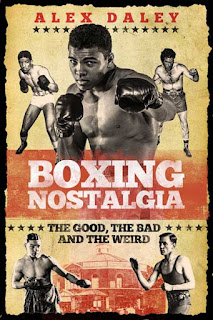 |
| Jack ‘Cast Iron’ Casey |
The sight of UFC star Conor McGregor’s deformed left ear on the cover of the 20 July issue of Boxing News got me thinking about cauliflower ears in boxing. There was a time when a cauliflower ear was the hallmark of a seasoned pro boxer. But today, you’re far more likely to see one on an MMA fighter or rugby player.
So why this modern lack of cauliflowers among the boxing brigade? I was once told by a London Ex-Boxers Association founder-member — now in his 90s — that it’s because ‘they don’t have enough fights now and they aren’t taught how to slip punches’, the theory being that cauliflowers were often caused by slipped shots cuffing the ear.
No doubt a fair few modern trainers would dispute the last part of his statement. The first part, though, is hard to deny. Today, a prospect will fight, say, five or six times a year, an established top-liner perhaps two or three times. But in the inter-war years, particularly in Britain, it wasn’t unusual for a pro to make 20 to 30 ring appearances a year. Career records of 200-plus pro bouts were common and these were not just journeymen; many were star performers.
For some, having a cauliflower ear (or ‘ticket’, as some called it) back then was a symbol of toughness — a badge of honour. There are tales of non-fighters trying to get cauliflower ears to pass themselves off as fighting men. But most bona fide boxers did their best to avoid getting one.
One of the most striking cauliflower ears I’ve seen on any top-line British pro belonged to Sunderland middleweight Jack Casey. Though never a British titlist, Casey’s fame surpassed that of many boxers who were. The reason for this was the strength of his jaw. Known as ‘Cast Iron’ Casey, he was a boxer who supposedly no one could knock out. In fact, no one ever did. He had 225 recorded pro bouts between 1926 and ’38, and an ill-advised comeback fight in 1942. His record stood at 149-62-15, according to ring historian Miles Templeton. Although stopped a few times by cuts or the ref’s intervention, the ten-count was never tolled over him.
Casey was so tough, he didn’t need to worry much about defence. Fighting out of a crouch with his hands held low, he would take full-blooded head shots without flinching, then leap in with his own blows. But he was far more than a human punchbag. He packed a decent punch and possessed exceptional stamina and strength. He liked nothing better than to slug it out and there were few better at wearing an opponent down.
Legendary three-weight British champion Len Harvey said Casey gave him his hardest fight. Jack went 15 rounds with Harvey for British and Empire middleweight honours in 1932. Casey also went the distance with future world middleweight champ Marcel Thil and beat such leading lights as Jock McAvoy, Harry Mason and Archie Sexton, future British heavyweight titlist Jack London, ex-British heavyweight ruler Reggie Meen and future British heavyweight king (and Joe Louis challenger) Tommy Farr.
Facing bigger men meant nothing to Jack. In a sport filled with men of iron, there have been few tougher than ‘Cast Iron’ Casey.
This piece by Alex Daley (first published in Boxing News on 3 August 2017) is one of 132 articles featured in the anthology Boxing Nostalgia: The Good, the Bad and the Weird. You can find out more or buy a copy here.

